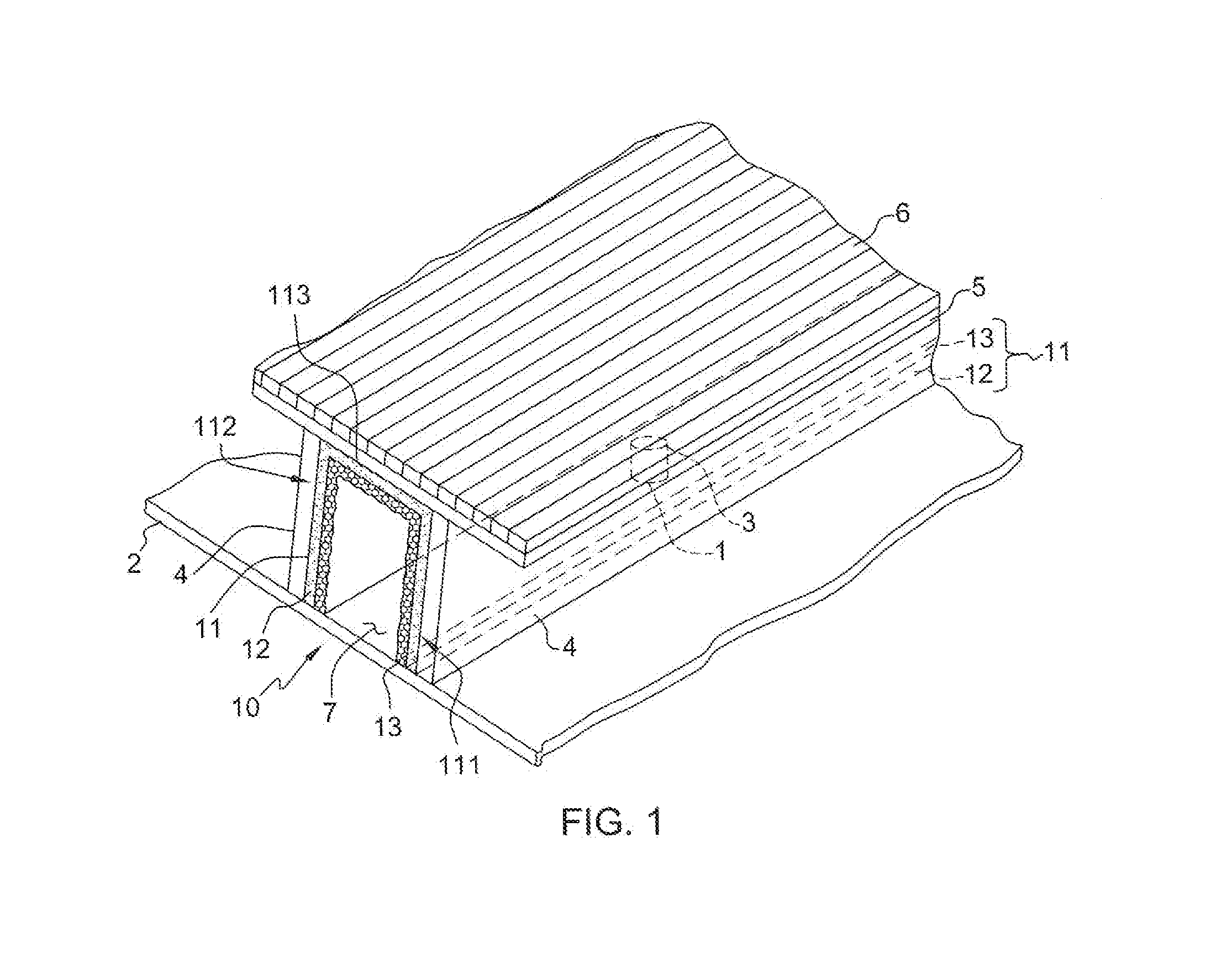Perforation Acoustic Muffler Assembly and Method of Reducing Noise Transmission Through Objects
a technology of acoustic muffler and perforation, which is applied in the field of attenuating noise systems, can solve the problems of noise entering the room or space, affecting the transmission loss, etc., and achieves the effect of reducing mechanical nois
- Summary
- Abstract
- Description
- Claims
- Application Information
AI Technical Summary
Benefits of technology
Problems solved by technology
Method used
Image
Examples
example 1
[0123]The frequency f of concern is 500 Hz. The velocity of the sound wave vw is 1100 ft. / sec. Using this information, the approximate desired length of the muffler plate 302 required by the design in FIGS. 13 and 14A [[Please verify]] can be determined.
λ=(1100 ft. / sec) / 500 Hz=2.2 ft.
[0124]The NRC coefficient for a material for using in absorbing sound waves with a frequency f of 500 Hz is 0.95.
β=λ / NRC=(2.2 ft.) / 0.95=2.32 ft.
[0125]The minimum length of the muffler plate 302 is approximately 2.32 ft. with the mechanism 312 being located approximately in the center of the rectangular muffler plate (i.e., 13 as shown in FIGS. 13 and 14A) [Bonnie is that “B” or “β”]. This determined minimum length of the muffler plate 312 should provide adequate noise attenuation whereby the sound waves will be absorbed prior upon exiting the opening formed by the muffler plate (FIG. 14A), while providing sufficient space to permit ventilation of the mechanism 312 and dissipation of any heat emitted fro...
example 2
[0126]This is the same scenario as example 1, except there the muffler plate is over a vent from a duct. This duct opens into an adjacent room and that duct opening can also be treated with a muffler plate 302. Additionally, the people in the rooms with the muffler plate 302 want either partial noise reduction or total isolation. The muffler plate 302 allows the scope of the noise reduction problem to be reduced. For this example, the transmission loss due to the distance the acoustic wave traveled in the duct is considered negligible, if there is no absorbing duct liner (formed from the sound absorbing material) The only means of reducing sound traveling from one room to another via the duct is to put a muffler plate over the HVAC diffuser or mechanism 312. Depending on the level of noise reduction required and the fact that there are now two mufflers, as described above, the length could now be divided by two, since two mufflers are required to only resolve ½ wave length when in a...
PUM
| Property | Measurement | Unit |
|---|---|---|
| distance | aaaaa | aaaaa |
| average frequency | aaaaa | aaaaa |
| noise | aaaaa | aaaaa |
Abstract
Description
Claims
Application Information
 Login to View More
Login to View More - R&D
- Intellectual Property
- Life Sciences
- Materials
- Tech Scout
- Unparalleled Data Quality
- Higher Quality Content
- 60% Fewer Hallucinations
Browse by: Latest US Patents, China's latest patents, Technical Efficacy Thesaurus, Application Domain, Technology Topic, Popular Technical Reports.
© 2025 PatSnap. All rights reserved.Legal|Privacy policy|Modern Slavery Act Transparency Statement|Sitemap|About US| Contact US: help@patsnap.com



